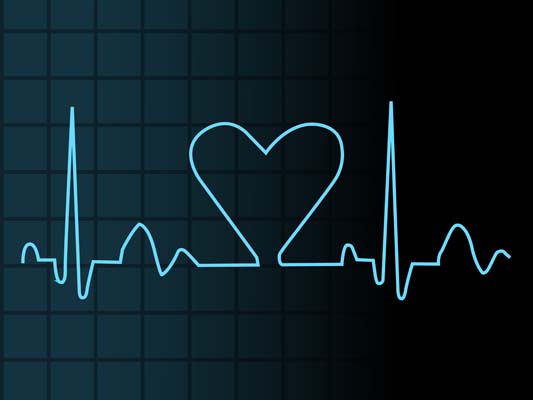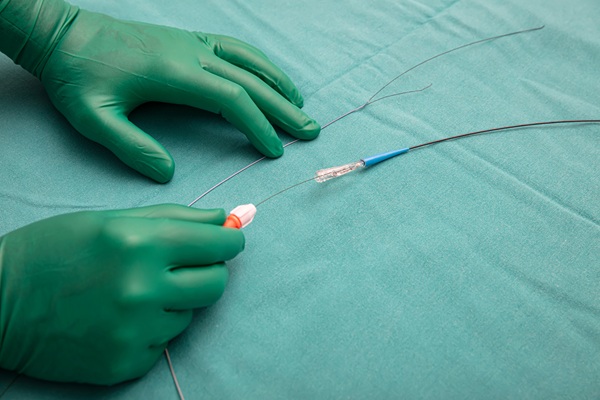Electrocardiogram

An electrocardiogram (EKG) is one of the most heavily utilized diagnostic testing procedures among cardiologists. They are entirely non-invasive tests, and it can be a great way to catch signs of a heart-related condition as early as possible. This ensures that proper treatment is administered in a timely manner.
What is an electrocardiogram?
An electrocardiogram, or an EKG, is a diagnostic test that cardiologists often use to record the electrical activity of a patient’s heart. It is often the first test administered in the event the patient exhibits symptoms of heart disease or another heart-related condition. The test is able to determine many different factors that are related to heart health and function, including the heartbeat, if there is any damage to the heart and the positioning of the wall and chambers of the heart. While a cardiologist may order an EKG for preventive measures, it is also used to determine the underlying cause of chest pain.
How does an EKG work?
An EKG is performed by having the patient lie down on a medical table. Small electrodes are strategically placed on the patient’s chest, which are used to record the electrical signals of the heart. The way the machine works is it turns the electrical impulses of the heart into wavy lines, which are displayed on a machine or printed. The cardiac care professional can examine the results and determine if there are any abnormalities present with the patient's heart activity. It is important for the patient to remain still during the procedure to avoid misleading results. The entire procedure typically takes less than an hour to complete.
Why might someone need an EKG?
An EKG measures the activity that takes place inside of the heart. It is able to detect anything that might be abnormal, such as damage to the heart muscle and poor blood supply to the heart arteries. In many instances, a cardiac care professional might order an EKG to ensure a healthy heart, and the patient may not have any symptoms of a heart condition. However, in other instances, an EKG might be ordered to determine the cause of heart-related symptoms, such as an irregular heartbeat.
How to move forward after an EKG
If the heart rhythm is consistent and the beats per minute are between 60 and 100, then it likely indicates a healthy heart. However, there are instances where an EKG might detect signs of heart damage, a congenital heart defect, or another form of heart complication, in which case additional testing may be ordered. In the event the diagnosis is threatening to a patient's health, it is important to remain positive and focus on the next step forward, which is treatment for the heart condition.
Schedule an appointment with us
If you are at risk of heart disease or experience concerning heart-related symptoms such as chest pain or irregular heartbeats, then you might benefit from an electrocardiogram. Here at our office, we have the staff and resources necessary to guide you through the entire testing procedure, answering any questions you may have along the way.
Request an appointment here: https://boyntonbeach.floridapremiercardio.com or call Florida Premier Cardiology at (561) 229-1411 for an appointment in our Boynton Beach office.
Check out what others are saying about our services on Yelp: Read our Yelp reviews.
Recent Posts
A heart specialist is a doctor specializing in diagnosing and treating cardiovascular conditions. Patients may be referred to one of these doctors for several reasons, from diagnosing a heart health issue to getting cleared for surgery. However, seeing a heart specialist is even more crucial for those either experiencing the signs of heart disease or…
Cardiologists perform angioplasty to open blocked arteries, specifically those caused by coronary disease. This minimally invasive alternative to open heart surgery can restore proper blood flow to the heart and often reverse the fast track to a heart attack. However, learning when one is necessary is crucial for treatment success.Coronary artery disease (CAD) is a…
The heart's valves must remain healthy and upright to promote an overall healthy heart and cardiovascular system. However, sometimes, they can weaken. Fortunately, various valvular disease treatments are available to address damage. Whether valves begin to narrow or leak, timely treatment is necessary.There are two main types of heart valve disease: regurgitation and stenosis. The…
Cardiovascular care is crucial in maintaining a healthy heart and preventing long-term complications such as heart disease, stroke, and hypertension. As the cornerstone of overall well-being, cardiovascular care involves regular monitoring, lifestyle changes, and medical interventions designed to support heart function. Understanding the basics of cardiovascular care can empower individuals to make informed decisions and…


